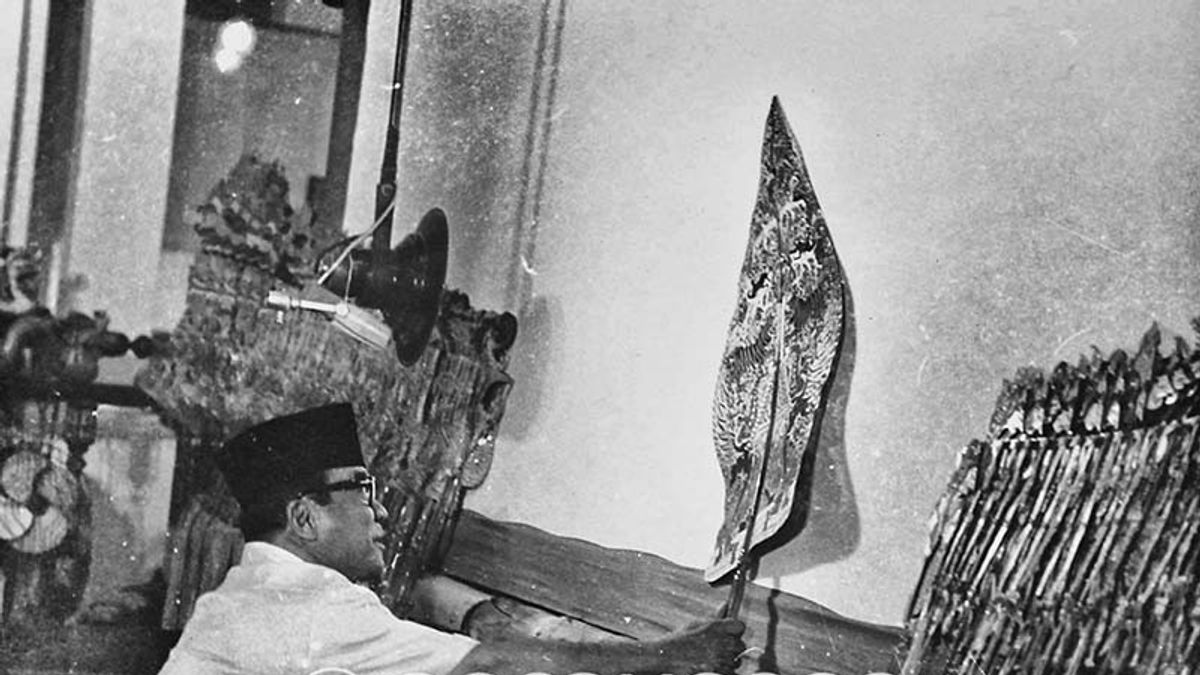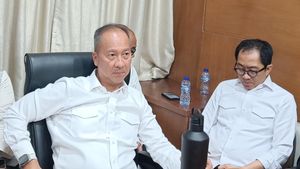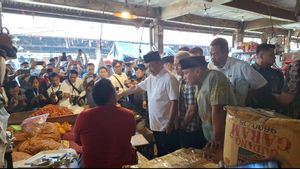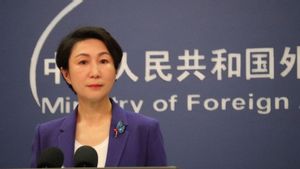JAKARTA - Soekarno is a true art lover. He lives in a family who loves wayang art. Even the name Soekarno (Karna) comes from the name of one of the warlords of Bharatayuddha. The love rubs off on him. Bung Karno was never absent every time there was a puppet show. Even he was willing to stay up late. The admiration bore sweet fruit for him. He was much inspired by the various characters of wayang figures who defended virtue. It is said that wayang mythology also inspired him to liberate Indonesia.
Growing up in an art-loving family is a blessing. Soekarno also felt it. His grandfather and father were both art lovers. Especially the puppets. His love for wayang has been passed down from generation to generation in his family.
Finally, Soekarno's nickname, Koesno Sosrodihardjo, was replaced by the name of one of the puppet characters. Koesno's name was considered by his parents to be unsuitable. Because, when little Soekarno was sick, he was often sick. From malaria to dysentery. Instead, the name was changed to Soekarno.

Soekarno is a new name that comes from wayang mythology, the classic story of the Mahabharata. Because, that's the name chosen. The name Karna comes from the greatest hero in the Mahabharata story. His character is brave, strong, and powerful.
All of these characteristics are expected to accompany the growth of little Soekarno. His father had projected Soekarno to grow up as a brave person. Savior for his oppressed people. As his father said: Karna was a fighter for his country and a devout patriot.
“Bung Karno was born on June 6, 1901 in Surabaya and was named by his parents Koesno Sosrodihardjo. Because they often fall in faith, some Javanese change their names, so they become Soekarno, which is taken from the story of Bharatayuddha, a commander-in-chief named Karna. Then adjusted to the Javanese accent to Karno and added the prefix Su which means "good", or richer, or more profitable."
“Raden Soekemi Sosrodihardjo - Ida Ayu Nyoman Rai is Bung Karno's father and mother who came from an educated and respectable family. Raden Sukemi, a teacher in the Dutch era, married Ida Ayu who came from a noble Balinese family. The religious difference between Raden Soekemi and Ida Ayu did not become an obstacle for the two couples. This uniqueness gave birth to Bung Karno who was moderate, compromising, and tolerant,” wrote MHD Halkis in the book Constellation of Indonesian Politics (2017).
Soekarno's love for art was getting worse. Bung Karno didn't just love art related to Javanese culture. Other cultures are also crazy about him. He always took the time to watch the arts every time he made a visit to the regions. He admired paintings, carvings, and sculptures. In fact, Bung Karno not infrequently moved on his own to explore something unique from a city.

Because of this, he always lauds every artist, humanist, and cultural actor he meets. He often took the time to mingle with them. Moreover, in Soekarno's eyes, cultural actors are like heroes who must be given great appreciation.
“The development of fine arts in Indonesia cannot be separated from the role of President Soekarno, who has an artistic spirit. In view of this fact, the public acknowledges that there is no president more than Soekarno in terms of loving and paying attention to works of art. Not only that, Soekarno even often used the time between his visits to the regions to visit artists' studios."
“If that's the case, he often lingers in conversation about works of art with the artists he visits. As an art lover and an admirer of beauty as well as an art creator, Soekarno has a prominent sense of art, as well as a true intellectual and an accomplished thinker. His artistic spirit cannot be separated from his symbolic nature, humanism, intellectuals, architects, and fighters," said Marwati Djoened Poesponegoro et al in the book National History of Indonesia Volume VI (2008).
Bung Karno and the Puppet
Wayang became one of the manifestations of Bung Karno's love for art. Since childhood, Soekarno was very fond of watching puppet shows. Every time there was a puppet show, Bung Karno often took the time to watch it. Bung Karno was willing to stay up all night to watch wayang all night.
Puppet art is not just a solace from the exhaustion of studying at school. For Bung Karno, wayang performances were more than that. The art of wayang taught him many things to navigate the play of life.
Bung Karno had a passion for wayang stories. It was the strength of the narrative and the character of the wayang that then strengthened Soekarno to always side with the oppressed. The wayang stories then accompanied him to fight until he was thrown into Benceuy Prison, then Sukamiskin Prison.
“When I can no longer endure the loneliness, darkness, and slums (in prison) I invite Gatot – Bung Karno's comrade-in-arms – to make a game. I managed to get the puppet book. I asked Billy to make a game. I managed to get the puppet book. I asked Gatot to read the book. I already know all the stories. Since I was a child I have admired wayang stories.”

“When I was still in Mojokerto, I used to draw wayang on my slate. In Surabaya I stayed up until 6:00 the next morning to listen to the dalang telling the famous stories. After Gatot diligently read the book, I gave him an order. Now put the book down and retell aloud what you have read," explained Soekarno as written by Cindy Adams in Bung Karno's book: Connecting the Tongue of the Indonesian People (1965).
The lesson that Bung Karno learned from wayang was a valuable lesson. About the figure of a formidable knight, for example. The knight would not give up until his opponents lost. He often works hard and smart. It was these wayang characters who gave him the strength to face all of Bung Karno's fears in life.
The meanings of courage were applied by Soekarno everyday. In attitude and resistance. The spirit of wayang who never gives up is his magic. It is said that this attitude made him dare to sacrifice his life to fight with the bumiputras. As much as possible to escape from all forms of colonialism.
“Bernhard Dahm (1969), a German historian who researched Soekarno's thoughts, based on Javanese mythology about wayang. According to Bernhard Dahm, Soekarno's thought was seen as a representation of Javanese-Islamic syncretism. Historian Robert K. Paget (1975) examines Soekarno's writings, Indonesia Mengjuang, from an analysis of the content of political speeches and writings. He observes the sources of citations, the frequency of citations, and the material cited," concluded Munawar Ahmad in Gus Dur's book Ijtihad Politics (2010).
*Read other information about HISTORY or read other interesting articles from Detha Arya Tifada
The English, Chinese, Japanese, Arabic, and French versions are automatically generated by the AI. So there may still be inaccuracies in translating, please always see Indonesian as our main language. (system supported by DigitalSiber.id)













